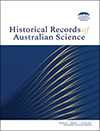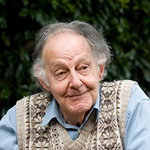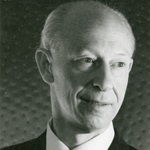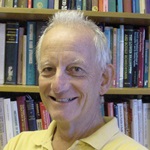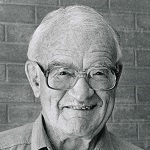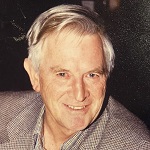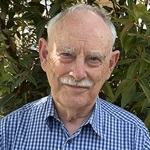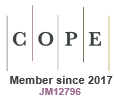Historical Records of Australian Science
Volume 36
Number 2 2025
Adrian Horridge is famous for his pioneering studies of invertebrate vision. Born, raised, and educated in the United Kingdom, Horridge moved to Australia in the late 1960s to take up a position as a Founding Professor of the Australian National University’s Research School of Biological Sciences, to establish a thriving department of neurobiology, which became one of the world’s leading entities in this field. Photograph by Horridge family.
Accurate description and mapping of the highly biodiverse vegetation across the large state of Queensland is essential for effective planning, management, and conservation. The unique regional ecosystem framework was developed, sustained and improved over three decades by a well-managed and skilled scientific team to produce the robust outputs required by the government’s policy agenda. Strategic long-term investing in public service scientific programs are uniquely placed to develop robust scientific products that deliver multiple benefits to all stakeholders.
William R. Levick was one of Australia’s most distinguished neuroscientists, a consummate experimental physiologist, who made fundamental contributions to our understanding of the neural circuitry of the retina and visual pathways. He discovered a class of retinal ganglion cells that detect moving objects and identify their direction of motion in the visual environment. Photograph by the Royal Society.
Marcello Costa was a leading neuroscientist who contributed enormously to current understanding of the autonomic nervous system. His research into the neurobiology of the gastrointestinal tract used innovative combinations of immunohistochemistry, electrophysiology, organ bath physiology, pharmacological analysis, and digital methods of spatio-temporal mapping of gut motility. He was committed to public education in science, was a keen advocate for evidence-based medicine, had a deep interest in the philosophy of science, and, for relaxation, was an enthusiastic windsurfer and musician. Photograph by Simon Brookes.
In October 2024, the largest optical telescope on Australian soil celebrated its fiftieth anniversary amid accolades that included a warm message from HM the King, who had opened it on 16 October 1974. Among the individuals most closely associated with the telescope’s conception, construction and commissioning one name stands out—that of Ben Gascoigne, a professor of astronomy at the Australian National University (ANU). With a second entirely different career flourishing in his later years, this extraordinary scientist’s life makes for a remarkable story.
David Headley Green AM, FAA, FRS was an outstanding geologist and leader in experimental petrology and geochemistry whose research shaped our understanding of the composition of the Earth’s mantle and the origin of magmas. He also fostered Antarctic geology and marine and climate science, and contributed to science policy. His achievements were recognised with many international and national awards. Photographer unknown. Photograph courtesy of the Green family.
Richard Daintree was a pioneer of photography for scientific purposes in Victoria. He took the first photographs from the top of Mount Kosciusko early in 1863 when on a reconnaissance trip with Alfred Selwyn, Director of the Geological Survey of Victoria. Whilst Daintree enjoyed such reconnaissance geological mapping, detailed mapping necessary for the large-scale geological maps published by the Geological Survey was not to his liking, as shown by his correspondence with James Hector, and led to his departure from Victoria.
R. A. (Ray) Perry AO MSc FTSE was a powerful advocate for scientifically-based management of Australia’s rangelands. Appointed by CSIRO in 1968 to lead its new rangeland research program, he built multi-disciplinary teams to investigate the state of arid and semi-arid Australia, and tirelessly promoted better management of rangelands nationally and internationally. Subsequently becoming Chief of CSIRO’s Division of Land Resources Management and later Groundwater Research, he is regarded by many as ‘the father of rangeland science in Australia’. Photograph by CSIRO, source unknown.


